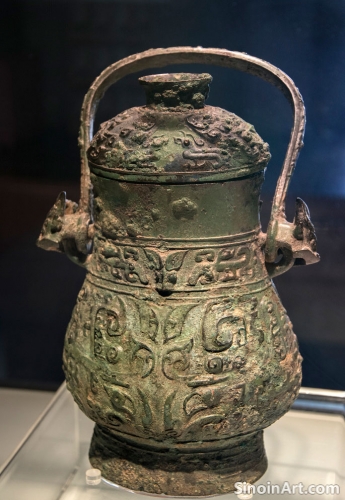The Use of Bronze in Ancient Chinese Writing: Brushes, Ink Stones, and Calligraphy Tools
|
While the focus is often placed on bronze inscriptions, bronze also played a role in the creation of other writing tools, including brush rests, ink stones, and other implements used by calligraphers and scholars, and underscoring the importance of the written word and the tools used to create it. The intersection of artistic and literary practices is a key element of ancient Chinese culture. The creation of these tools helps to illuminate the processes and practices of the time.  Bronze brush rests, often designed as elegant and decorative pieces, were used to support brushes, helping to both protect and also to showcase these essential tools of writing. The care taken in the design of these objects helps to illustrate the respect and importance that was placed on the act of writing and also on the tools used to carry out the practice.  Bronze ink stones, used to grind and prepare ink, were also valuable instruments for those who practiced the art of writing, often meticulously designed and often possessing a level of visual beauty as well. These objects helped to provide a smooth and consistent surface for the preparation of ink, which was a key element in the practice of calligraphy.  Bronze writing knives, also often included in the collection of writing implements, were used for preparing bamboo strips and other writing surfaces and also for the correction and alteration of writing, highlighting the practical and technical aspects of written communication. The care taken in creating and maintaining these tools emphasizes the importance that was placed on written communication. The use of bronze in writing tools reveals the importance of both technical skill and also artistic sensibilities in the practice of writing in ancient China. The use of these tools was a key component of both daily life and also for high levels of cultural engagement. The creation and use of these objects reflect the value that was placed on both art and knowledge. |
Tag : bronze writing tools, ancient calligraphy, ink stones, brush rests, Chinese script
Related information
- Analyzing the Surface Patina of Chinese Bronze Ware: A Story of Time and Environment
- The Influence of Ancient Chinese Bronze Ware on Modern Design Aesthetics: Form, Function, and Beauty
- The Use of Bronze in Ancient Chinese Ritual Practice: Beyond Vessels and Symbols
- Bronze Ware and Ancient Chinese Medicine: Vessels for Preparing and Storing Remedies
- Bronze Ware and the Influence of Ancient Chinese Philosophical Schools: Confucianism, Daoism, and Legalism
This article explores the surface patina of Chinese bronze ware, discussing its formation, its value as a historical record, the factors that influence its appearance, and the techniques used to distinguish between natural and artificial patinas.
This article explores the influence of ancient Chinese bronze ware on modern design aesthetics, highlighting how contemporary designers draw inspiration from its forms, patterns, techniques, and its continued relevance in diverse creative fields.
This article explores the use of bronze beyond vessels and weapons in ancient Chinese ritual practices, highlighting bronze musical instruments, ritual implements, and ceremonial objects, and revealing how these objects played a crucial role in spiritual ceremonies.
This article explores the use of bronze in ancient Chinese medicine for preparing and storing remedies, highlighting the creation of specialized vessels and containers, and revealing the connection between metallurgy and traditional healing practices.
This article explores how bronze ware was influenced by different schools of thought in ancient China, including Confucianism (order and ritual), Daoism (nature and spontaneity), and Legalism (authority and order), and demonstrating how these philosophies shaped both design and usage.